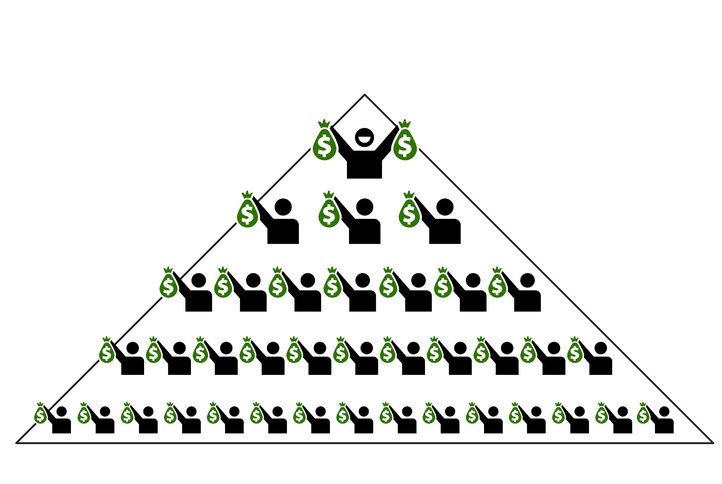Yves here. A fashionista friend has been urging me to write about Armani, not for his designs but for his outsized role in changing the fashion industry. Even though I did buy some Armani back in his heyday for women’s clothes, the 1980s, and even with the extensive coverage of his death at 91, I didn’t feel sufficiently expert to write an entire piece. But with the article below, which ran originally as Giorgio Armani: farewell to the visionary designer who defined modern elegance, I can add critical details about his impact.
The 1960s were a terrible time for fashion. Rich women were wearing distressed jeans and goofy headscarves. Design houses might persuade them to buy the occasional fringed suede jacket or handbag, or pricey boots. “Fashion” then was French, with a small group of stylish women (think the sort that Truman Capote lunched with) going to Paris for the usual three fittings for a daytime suit or an evening gown. My understanding is these haute couture frocks were either un or barely profitable, but they served as R&D for the designs in fashion magazines and sold to the public at large. The designers would work with new fabrics and play with new cuts and construction. Haute couture created highly structured garments, since a big aim was to flatter aging bodies.
This all changed with the Pill and women’s liberation. Women began their march into the workplace, including law firms, Wall Street, and managerial posts at big corporations. Their demand for attire that would make them look credible even in board rooms was a shot in the arm to a flagging industry.
Armani was in the right place at the right time. He (along with Saint Laurent and Givenchy) was one of the few designers to provide the same caliber of tailoring and fabric as in fine men’s suits, but in styles that were beautiful yet understated, so the woman was wearing the clothes as opposed to the clothes wearing the woman. Armani, unlike the top French design houses, also has a men’s wear line that (as far as I can tell) was as high end as the women’s. Amusingly, I recall when the McKinsey partner I worked with the most asked me, “What do you know about Armani?” He owned a townhouse on Madison. Armani was seeking to and did lease it.
Armani effectively end-ran the French prestige lock on wealthy, style-enthusiast women by cultivating a high-visibility type of workers, male and female: Hollywood stars. A breakout for Armani was when he clothed both Richard Gere and Lauren Hutton in American Gigolo.
A big part of Armani’s genius was as a businessman. His personal and business partner, Sergio Galeotti, was an early AIDS casualty in 1985. But in a break with other top designers, Armani took over the commercial as well as the fashion side, and proved to be extremely adept. He produced successful lines without having a haute couture laboratory. He also created an empire that was private and controlled by him and his foundation at his death valued at between $7.4 and $12 billion. And Armani did that the hard way, mainly on clothes. For Saint Laurent and Chanel, perfume and cosmetics are the high margin products; for other designers, handbags are the profit boosters.
Armani put Milan on the map as a fashion center. Before him, the top Italian brands were Gucci and Pucci. He also was reported to be a very egalitarian boss, despite also being a stickler, and had many employees who’d been with him for decades. He was a workaholic, still in the saddle at 91 and planning a major show later in the month in which he died.
By Pedro Mir, Profesor de la Facultad de Económicas y Director Académico de ISEM Fashion Business School, Universidad de Navarra, Universidad de Navarra. Originally published at The Conversation
Giorgio Armani’s passing at the age of 91 has closed a golden age in high fashion, and consolidated the legacy of a visionary who forever redefined the codes of contemporary style. The designer’s death marks a crucial moment for an empire that generates annual revenues of €2.3 billion euros.
Armani transformed fashion with unstructured silhouettes that challenged decades of sartorial tradition. At a time when shoulder pads dominated the catwalks and men’s suits still followed rigid Victorian codes, the Milanese designer proposed something radically different: sophistication through simplicity.
His genius lay in understanding that true luxury did not shout, but whispered – the relaxed structure and flowing lines of Armani jackets freed both men and women alike from the strictures of extreme formality. Armani’s business success was, in essence, this concept of understated elegance turned into a multi-million-euro empire.
Dressing the Dreams of Millions
Armani is recognised for having invented red carpet fashion, an achievement that transcends the textile industry and enters the realm of popular culture. From Richard Gere in the 1980 film American Gigolo to today’s stars, the Italian designer understood that dressing Hollywood meant dressing the dreams of millions of people.
His creations did more than just adorn bodies. They constructed characters, defined eras, and set global standards of aspiration. On screen, each Armani suit became a silent expression of what it meant to be elegant, powerful and desirable.
Armani also helped to make the “made in Italy” label synonymous with quality for consumers, elevating Italian manufacturing to the highest levels of prestige. Far more than a fashion designer, he was a cultural ambassador who exported Mediterranean sophistication to global markets, from Tokyo to New York.
The Armani empire is not only a testament to commercial success, but also to the ability to transform a coherent artistic vision into an enduring cultural phenomenon.
A Maximalist Minimalist
In an industry beholden to ostentation, Armani embraced sober restraint as his creative philosophy. His neutral palettes, exquisite textures and impeccable cuts proved that it was possible to be both revolutionary and subtle. Each garment was an exercise in subtraction, in stripping away the unnecessary to reach the pure essence of the design.
This minimalist approach was not one of coldness, but distilled warmth. His garments enveloped the wearer in a second skin of confidence, transforming clothing from mere attire to psychological armour.
For more than five decades, Armani shaped modern elegance with a clarity of vision that extended far beyond fashion.
His influence extends from the architecture of his boutiques to the philosophy of life he represented: beauty found in simplicity, power expressed with moderation. Today, as the fashion world mourns this irreparable loss, it is clear that Giorgio Armani did not just dress bodies: he dressed an era.
His legacy will live on in every silhouette that celebrates elegance over ostentation, in every garment that favours subtlety over flashiness, and in every designer who understands that true revolution sometimes talks to us in the quietest of voices.
“Il Signore Armani”, as he was affectionately known, leaves behind not only a commercial empire, but also a masterclass in how authentic artistic vision can transform entire industries. In an increasingly noisy world, his quiet voice now resonates more strongly than ever.
An Astute Entrepreneur
The Armani empire was more than a brand. It was a meticulously structured financial ecosystem, and the business’ design reflects its founder’s strategic vision: Giorgio Armani as the flagship haute couture brand, Emporio Armani as the accessible luxury segment, and Armani Exchange for the youth market. This segmentation allowed the group to reach multiple demographics without undercutting or jeopardising its core business.
In an industry dominated by conglomerates like LVMH and Kering, Armani was the exception: he was both CEO and sole major shareholder of the company, and maintained absolute control over its creative vision and commercial strategy.
This independence was ideological, but also financially astute. Without pressure from external shareholders, the group was able to maintain healthy profit margins and consistently reinvest in its global infrastructure.
The company is estimated to be worth between €6 billion and €7 billion today, but regardless of the exact figure, Armani has established himself as one of the most successful entrepreneurs in the history of fashion.
Beyond Clothes
Armani’s financial genius was evident in his ability to diversify. The company operates a line of restaurants and cafés around the world, and is planning, together with UAE-based firm Emaar Properties, to launch a chain of luxury hotels and resorts in major cities including New York and Tokyo. This expansion is the logical extension of a brand that had managed to transcend fashion and become synonymous with an aspirational lifestyle.
The Armani business had also expanded into music, sport and Italian cuisine, creating an ecosystem of mutually reinforcing brands that maximised the value of its intellectual property.
This paid off, as at times when other luxury groups were hit by market fluctuations, Armani showed exceptional resilience – its revenue grew by 16.5% in 2022, despite volatile markets.
The group’s conservative strategy of maintaining a cash reserve of over €1 billion also enabled it to navigate economic crises without relying on external financing or strategic partners. This liquidity provided stability, as well as bargaining power and the ability to make countercyclical investments.
A Business Model to Emulate
Armani’s financial success was no fluke. His model combined vertical control of production with strategic geographical expansion, as well as brand management that maximised the price of Armani’s superior quality.
As the fashion world mourns his loss as a designer, financial analysts will be eulogising Armani as a business strategist who built one of the luxury sector’s most profitable and stable companies.
He managed to maintain margins above 20% for decades, expand globally without losing its brand identity, and resist the pull of industry consolidation. All of this makes his legacy required reading for any business school student.
The empire Armani leaves behind is not just a collection of assets. It it is the embodiment of an understanding that true luxury cannot be bought, it must be built. Brand by brand, shop by shop, season after season.


























